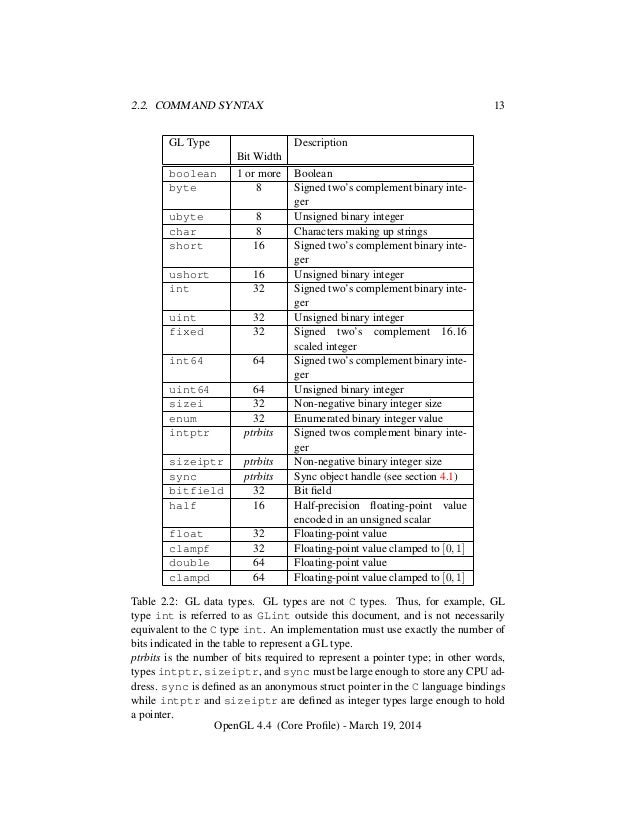
The geometry shader then uses a texelFetch() on the TBO with the coord set to gl_PrimitiveIdIn*3 + vert_num. For your cube example, this means you’d have 8 points, 12 triangles, and 36 vertices. Then you build the uv TBO so that contains the vertices in the order of the tessellated triangles. It requires that your model be all triangles, or tessellated to triangles. The only way I know of doing this in unextended GL is to use a geometry shader in conjuntion with a texture buffer object containing the UV coords.
#Is opengl 4.4 still used how to#
Since I am associating each vertex with one UV coordinate, but I am also indexing the vertices, unless I have the same number of vertices than UV coordinates and they are also stored in the same order so that the correct UV coordinate can be accessed using the vertex index, the texture won’t be displayed correctly.Īs I said before, I may have a way to work around this problem, because I have an array of UV indices and an array of UV coordinates, but I don’t know how to pass this data to OpenGL -I don’t know if I can index UV coordinates in OpenGL. finally, I call glDrawElements() to do indexed drawing.after that, I configure the array buffer layout using glVertexAttribPointer() and I tell him that the array buffer has both the vertex position and the UV coordinate for each vertex.then, I create a GL_ARRAY_BUFFER, where I store the vertices AND the UV coordinates using glBufferSubData().first, I create a GL_ELEMENT_BUFFER where I store all the vertex indices.My problem is the result of how I am passing the information to OpenGL. That same cube, in a best case scenario, can then have 4 UV coordinates, 8 vertices and 36 vertex indices.

For example, take a cube, in a worst case scenario, it will have 24 UV coordinates, 8 vertices and 36 vertex indices. I have a different number of UV coordinates than vertices because the UV coordinates can be generated differently depending on the model. Is there some way I can give OpenGL the UV coordinates and their indices in the same fashion as I do with the vertices when doing indexed drawing (using one buffer for the UV coordinates, and another for the UV indices)? So far I have an array of vertices, an array of UV coordinates and 2 array of indices, one for the vertices and another for the UV coordinates. Most of the times, I have a different number of UV coordinates than I have vertices and I have no idea of how blender organizes the vertices but they are definitely not in the same order as the UV coordinates. But it is unlikely that these 2 conditions will meet for most cases. My program’s logic is somehow correct as long as I have the same number of UV coordinates as I have vertices and both the vertices and the UV arrays are ordered so that they can both be accessed by the same index, the texture will be rendered correctly. So far my program can render the mesh, including texture, but the texture is not rendered correctly because I was attempting to pass the UV coordinates to OpenGL using GL_ARRAY_BUFFER. I have a program where I load a mesh from a wavefront (.obj) file exported from blender. Hello everybody, I know this question have been asked quite a few times now, but so far I haven’t found a proper answer.


 0 kommentar(er)
0 kommentar(er)
